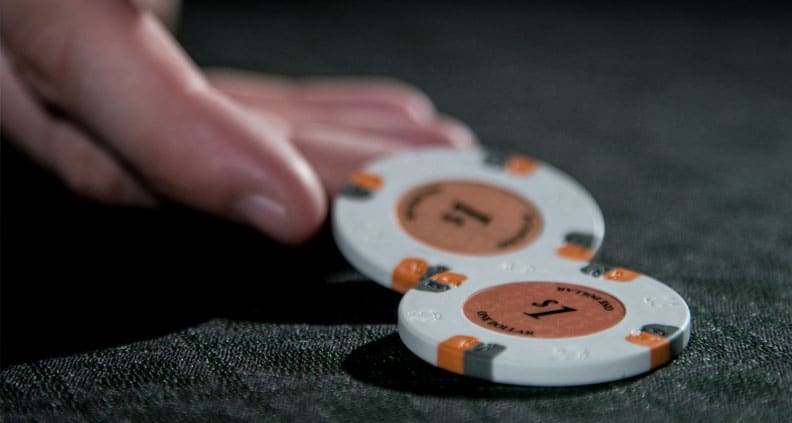
First Order Approximations
I have a degree in engineering. Early on, one of the professors said to us that “The professors are all lying to you. With each class, we lie to you less and less.”
What he meant by this is there are some basic rules of physics that describe our world pretty well. These rules can answer a lot of questions by using some pretty big simplifications like “This object is perfectly rigid”, “There is no friction” or ‘Let’s pretend this non-spherical thing is spherical.” These simplifying assumptions allow us to ignore many complexities of the world and get something done. This very simplified idea of how the world works is called a “First order approximation.” First order approximations can get you a long way, I suspect a lot of them got us to the Moon with a slide rule.
It is good to learn complex things by starting with huge assumptions that get us a reasonable answer with our limited understanding. Once we become very familiar with how things work in this simplified model of the world we can start to refine our model by removing assumptions (or likely replacing them with smaller assumptions). It is folly to try and teach a freshman engineer to model the flight of an arrow all at once. This is a a very complicated phenomenon. At first, we might say, “This flexible arrow, flying through the air, is slowed by non-linear viscous friction. However for now, we will just say it is a sphere moving through a frictionless environment. We measure the pull of the bow, and the angle it is shot at and we should have a pretty decent idea where the arrow will land.” It is not a perfect model, but it might say the arrow will fly 50 feet but in reality the arrow tends to go about 60 feet. Not bad for a back-of-the-napkin guess.
If we start a student trying to do a full dynamic model of the arrow flight with the non-rigid body moving through a viscous fluid and accounting for the lift characteristics of flight, the freshman is likely to come up with an answer of 12,528 feet and have no idea of how far off they are or where they went wrong. It is better to start with a decent approximation and refine it.

“Should I Limp?”
First order approximation of poker says “Do not limp” This comes straight out of “Miller & Hull 101″. It is a good assumption, it will get you to a profitable pre-flop strategy.
Then you get to “Soto and Sweeney 201″ and you hear that limping is great. They are right, but their view of the world is more complicated, more nuanced and it is easier to mess up. It is far easier to understand this second order approximation of the world once you understand the simplified version of the world.
I have a frequent student, Shiner (after the well worn Red Chip Poker card protector he carries). Shiner ran into a new, high quality problem lately. The fastest gains in coaching come early on when the biggest leaks and the costliest mistakes are still present in the game. Once those are cleared up there is still plenty to do, but the mistakes are less obvious and overlooked opportunities are harder to find. We have to look deeper for the next edge and it will be smaller than the last.
Shiner is following a fairly static pre-flop strategy that involves no limping. This is great, and would improve most player’s results incredibly if they followed it. There comes a point though that limping makes sense. I believe that limping is an advanced maneuver. When Shiner asked what to do with T8s on the Button after a bunch of limpers, I knew he was ready to incorporate some limps into his game.
This kind of thing does not fit neatly into a starting hand chart. There are, however, a bunch of factors to consider that makes you more or less willing to limp into a pot. Limping behind can have some merit.
What are the key factors we need to consider?
Position: One of the biggest reasons not to limp is that players behind you should rightly be raising you. The closer you are to closing the action, the more this danger diminishes.
Pre-flop fold equity: If the limper in the pot is likely to limp/call, then our raise has less pre-flop fold equity. If there are multiple limpers already, we have less fold equity. With less fold equity, we need to have a higher value hand.
Likely SPR: If we think we can limp and see a flop, we can predict the likely stack-to-pot ratio (SPR) pretty well. Limping in will give us the highest SPR possible. A high SPR favors speculative hands that will allow for meaningful bets over multiple streets. If we raise, we can take a guess at our likely SPR also. The SPR in a raised pot will be lower. Lower SPRs favor high card hands that can comfortably commit to the pot early in the hand. You want to be thinking about the kind of hand you hold and what SPR will be ideal for that hand. Remember that short stacks that limp in to the pot before you can complicate your situation because you are limited by their stack size.
Observation by opponents: If we limp into this pot, we likely have hands that we would raise with also. We now have two sets of hands in this spot so we are giving up something about our hand. Will the opponents in the hand notice this and more importantly be able to do something with that information?
Back to the problem at hand. Shiner held T8s on the button. Looking around at the limpers, one of them was a particularly predictable player. He was going to call a raise. This means that if we raise, at most we would isolate this player but we are not taking down the pot with any reasonable frequency pre-flop. This means that we want a set of hands here that are purely value-oriented. The definition of “value-oriented” is different in this situation though. Suddenly A9o, KTs and QJo are looking pretty good against this Villain’s wide but sticky limping range.
The next question, what is the likely SPR if we raise? Since the likely Villain had a short stack, if we raise, we are likely to end up in an SPR of 2. That is not the SPR we want to go to war with holding T8s.
All of this points to the idea that raising here is not a good idea.
Does T8s play well enough post flop, from the button with four opponents to merit a limp? Will we see the flop if we do limp? Looking to the blinds, we expect them to limp and see the flop also. This means it is worth considering seeing a pot with a likely SPR of about 20.
Playing around with a Range Advantage software program I am developing, I see that against a reasonable limping range for the opponents, we can expect to hit the flop with a draw or pair about 50% of the time. Our average equity is 50% when we hit. When we hit the flop and an opponent does too we have about 40% equity, but much of that lower equity is because we have draws a lot. It looks like seeing a flop with a reasonable SPR and position is going to give us a chance to play poker with good equity and position.
Limping here makes sense, raising does not.
Will this kind of hand make us a lot of money on average? No, will it make us some? Yes. This refinement to our game requires us to play in more difficult situations for lower edges, but this is not Poker 101, it is Poker 202 and you can do this.

I love to isolate limpers, cbet and take down the pot. I think it’s what makes me a winning players at 1/2 limp. But, I do get caught up isolating too light and getting in some bad situations. How much equity would you say you need against one caller? Two callers? I plugged in some numbers and I made a hand range against one limp/caller that gives me 40% equity against their calling range. I think having position and skill edge makes up for the other 10%. Am I wrong in thinking that? When I think I may get two callers, I made a range that I will be the favorite. Does this all sound correct or am I thinking about this all wrong?
I think this kind of thing is very difficult to quantify. Another term from computer science applies here: GIGO – Garbage In, Garbage Out.
You can make all the assumptions you want about their ranges, your skill post, etc and the results will vary wildly. I don’t think we can model their pre-flop ranges and then the post flop game well enough to ever come up with a reasonable answer. This is from the Math Guy of the team here.
So, what can we do?
We can ask ourselves some questions that ground what we are doing in reality.
An example: We theorize that with post-flop play, pre-flop fold equity etc, that T7o on the Button is good over three limpers. OK, if that is true, then what other hands must that be true for? We would come up with a wide class of hands and determine that using whatever logic we used for T7o that the rest of the hands are also profitable.
Does that isolation range seem at all reasonable? Or is it more a situation that we are just finding justification to get in a hand?
I think the best that we can do, is really ask ourselves what are the factors that are important to this isolation decision. When we have clear and articulable reasons for the isolation then we are in a good place to make this raise. The more we clearly think about these factors every time we iso raise, the more detail we see.
For instance, the first limper and the BB are critical in this decision. They are the ones most likely to be the conductor on this limp/call train. The stickier they are, the more we need to have pure value for this raise.
What if we have a limp-folder followed by a sticky calling station? What kinds of hands do we want there? What kind of raise size will give us the ideal situation of isolating us with the station?
I can’t tell you how to weigh all of these factors here, but learning to identify them will clarify the thought process down to the primary components that matter.
I agree.
I often find myself in a situation where I isolate myself against calling stations. With the excuse of wanting to be aggressive.
I am not understanding “observation by opponents.” You say we will limp with hands we would also raise with. If so, doesn’t that make it more confusing for opponents to know what kind of range we have?
Or do you mean that we are splitting our range:raising with value hands and overlimping with spec hands?
Thanks!